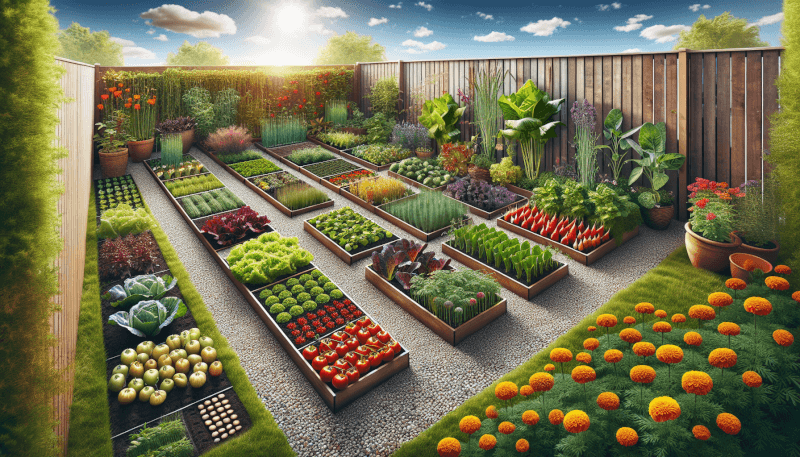Are you ready to give your green thumb a workout? This article will guide you through the top ways to design your very own DIY vegetable garden. Whether you have a spacious backyard or just a small balcony, you’ll learn creative and practical ideas to turn any space into a thriving vegetable oasis. From raised beds and vertical gardening to companion planting and square foot gardening, there’s a design option for everyone. Get ready to dig in and discover the secrets to cultivating a bountiful and beautiful vegetable garden right at home!
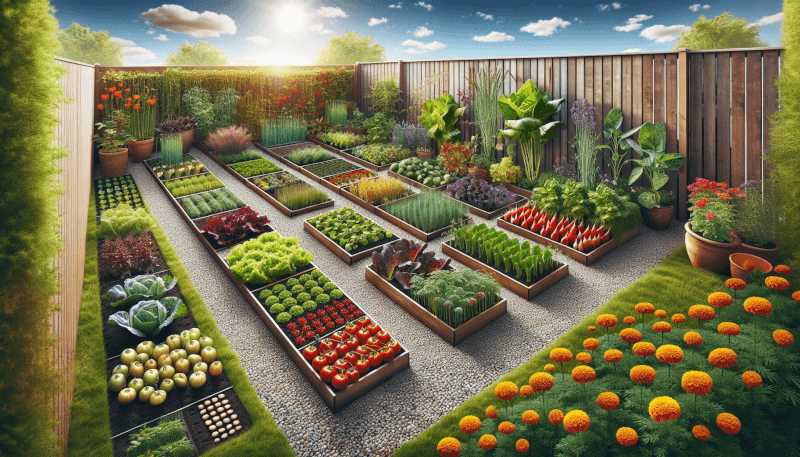
1. Choosing the Right Location
When it comes to designing your own vegetable garden, the first step is to choose the right location. Assessing sunlight exposure is crucial as most vegetables require at least six hours of direct sunlight each day. Take note of any obstacles such as trees or buildings that may cast shadows on your chosen area during different times of the day. This will help you determine the best spot for your garden.
Considering soil quality is also important in selecting the right location. Different vegetables thrive in different types of soil, so it’s essential to evaluate the soil’s texture, fertility, and pH level. Conduct a soil test to determine its nutrient content and pH level, as this will guide you in making any necessary amendments or adjustments to the soil before planting.
Another factor to consider is drainage. Vegetables need well-draining soil to prevent waterlogging and root rot. Observe how water flows in the area after a heavy rain or watering. If the water tends to pool or takes a long time to drain, you may need to consider amending the soil or choosing a different location with better drainage.
2. Selecting the Vegetables
Once you have chosen the ideal location for your vegetable garden, it’s time to select the types of vegetables you want to grow. Start by identifying suitable vegetables that are well-suited to your climate, soil type, and sunlight exposure. Consider your personal preferences and the vegetables that you and your family enjoy eating the most.
Assessing space requirements is crucial to ensure that your plants have enough room to grow and thrive. Some vegetables, such as tomatoes and squash, require more space, while others, like lettuce and radishes, can be grown closer together. Take into account the mature size of each plant and determine the appropriate spacing between them to avoid overcrowding.
Consider companion planting to maximize your garden’s potential. Certain plants have natural abilities to repel pests or attract beneficial insects. For example, planting marigolds near tomatoes can help deter nematodes, while growing basil alongside peppers can enhance their flavor and repel common pests. Research companion planting combinations to create a balanced and harmonious vegetable garden.
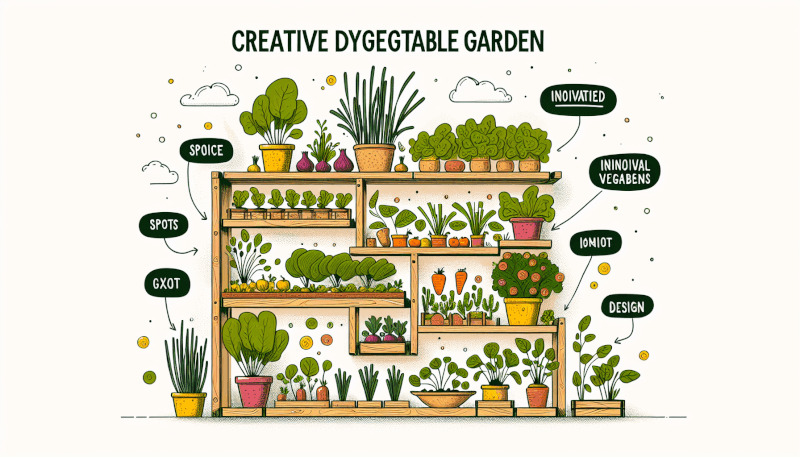
3. Planning Garden Layout
To create an organized and visually appealing vegetable garden, careful planning of the garden layout is necessary. Start by plotting the shape of your garden, whether it be rectangular, square, or even curved. Consider the overall aesthetics and functionality of the space when deciding on the shape.
Determining bed sizes is essential to optimize planting space and ensure easy access for maintenance and harvesting. You can decide on standard bed sizes or customize them based on the available space and your individual preferences. Remember to leave enough room between beds for pathways, which will make navigating the garden easier.
Incorporating pathways is crucial for efficient garden maintenance and harvesting. Pathways allow you to access different areas of the garden without stepping on the soil and compacting it. The width of the pathways will depend on your needs, such as whether you plan to use a wheelbarrow or garden cart. Consider using materials like gravel, wood chips, or stepping stones to create durable and visually pleasing pathways.
4. Preparing the Soil
Once you have planned the layout of your vegetable garden, it’s time to prepare the soil for planting. Begin by clearing the area of any existing vegetation, including weeds and grass. Remove any large rocks or debris that may hinder plant growth or impede the development of the root system.
Removing weeds and grass is crucial to prevent competition for nutrients and space. Use a garden fork or shovel to loosen the soil and manually remove weeds by their roots. Alternatively, you can use an herbicide specifically designed to kill weeds and grass, following the instructions carefully to avoid harming your future vegetable plants.
Loosening the soil is important to improve its structure and promote root development. Use a garden tiller or a garden fork to break up compacted soil, ensuring that it is loose and friable. This will create a favorable environment for your plants’ roots to penetrate deeply and access the necessary nutrients and water.

5. Building Raised Beds
Building raised beds is a popular choice for DIY vegetable gardens as they offer numerous benefits. They provide better soil drainage, minimize weed growth, and make it easier to control the quality of the soil. When constructing raised beds, there are several factors to consider.
Choosing the right material for your raised beds is crucial for their durability and effectiveness. Common options include wood, concrete blocks, or galvanized steel. Wood is a popular choice for its affordability and ease of construction. If using wood, opt for untreated lumber or rot-resistant varieties like cedar or redwood to prevent potential leaching of chemicals.
Constructing the beds involves building the frame to hold the soil in place. Measure and cut your chosen material to the desired dimensions of your raised beds. Secure the corners with screws or brackets to ensure stability. Consider adding additional support if needed, especially for longer beds to prevent bowing or sagging over time.
After constructing the beds, it’s time to fill them with soil and compost. Use a mixture of high-quality garden soil, compost, and organic matter to provide your plants with necessary nutrients. This will create a fertile environment for optimal plant growth. Ensure that the soil level is slightly below the top of the raised bed to prevent soil erosion during watering or heavy rainfall.
6. Installing Irrigation Systems
To ensure proper watering and maintenance of your vegetable garden, installing an irrigation system can be a game-changer. Research different types of irrigation systems to determine the best one for your specific needs.
Consider factors such as water efficiency, ease of use, and compatibility with your garden layout. Some popular options include sprinkler systems, drip irrigation, or soaker hoses. Each system has its advantages and disadvantages, so choose the one that suits your garden design and personal preferences.
Determining water requirements is crucial to avoid over or under-watering your plants. Different vegetables have varying water needs, so it’s essential to research the specific requirements of each plant. Factors such as temperature, humidity, and soil type can also affect watering frequency. Take note of any rainfall patterns in your area and adjust your irrigation system accordingly.
Installing drip or soaker hoses is a great option for precise and efficient watering. These systems deliver water directly to the base of the plants, minimizing water wastage and reducing the risk of leaf diseases. Lay the hoses strategically along the rows or beds, ensuring that each plant receives an adequate amount of water.
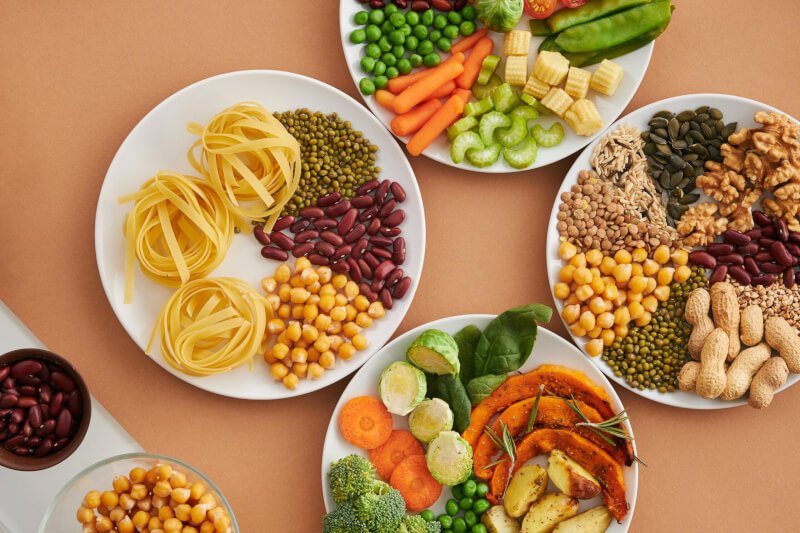
7. Planting the Vegetables
Once your vegetable garden is ready, it’s time to plant the vegetables and watch them thrive. Follow these guidelines to ensure a successful planting process.
Following spacing guidelines is important to prevent overcrowding and promote healthy plant growth. Different vegetables require specific spacing to allow proper air circulation, prevent the spread of diseases, and avoid competition for sunlight, water, and nutrients. Refer to seed packets or gardening guides for the recommended spacing for each plant.
Properly planting seeds or seedlings will give them the best chance of success. Read the instructions on seed packets to determine the ideal planting depth and spacing for each vegetable. Use a garden trowel or your fingers to create a small hole, place the seeds or seedlings gently, and cover them with soil. Firm the soil lightly around them to ensure good soil-to-seed/seedling contact.
Providing support for climbing plants is crucial to help them grow vertically and maximize space usage. Many vegetables, such as tomatoes, cucumbers, and beans, benefit from trellises, cages, or stakes to support their vines and prevent them from sprawling on the ground. Install these supports early in the planting process to avoid damaging plant roots later on.
8. Implementing Pest Control Measures
Dealing with pests is an inevitable part of gardening, but there are effective and eco-friendly ways to manage them. Implementing pest control measures will help protect your vegetable garden and ensure a bountiful harvest.
Using natural pest deterrents is a safe and environmentally friendly approach to repel pests. Planting companion flowers or herbs with strong scents, like marigolds, mint, or lavender, can help deter insects. Creating physical barriers such as netting or row covers can also prevent pests from reaching your plants.
Introducing beneficial insects is another effective way to control pests in your vegetable garden. Ladybugs, lacewings, and praying mantises are natural predators that feed on common garden pests like aphids and caterpillars. Attract these beneficial insects by planting flowers such as yarrow, dill, or fennel.
Creating physical barriers is especially important for protecting your vegetables from larger pests like rabbits or deer. Install fences or use repellents specifically designed for these animals to keep them away from your garden. Regularly inspect the perimeter of your garden and repair any holes or gaps to maintain the effectiveness of the barriers.
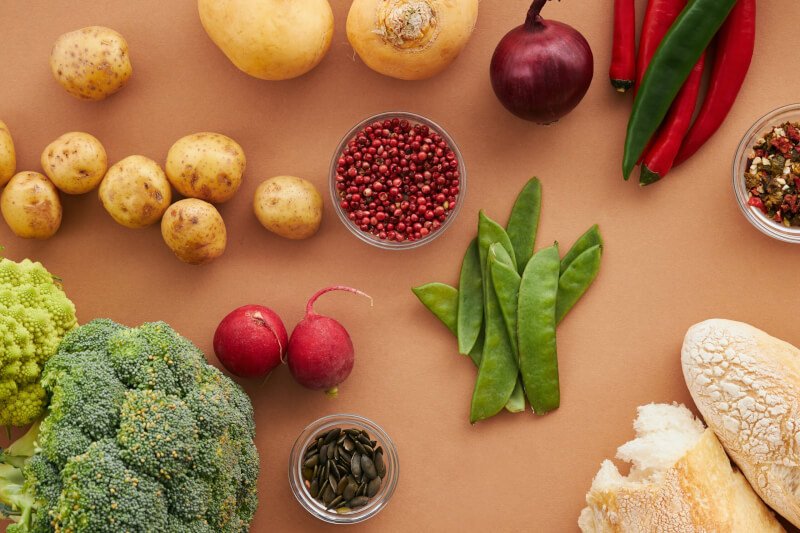
9. Maintaining the Garden
Once your vegetable garden is established, regular maintenance is necessary to ensure its health and productivity. Follow these guidelines to keep your garden in prime condition.
Watering and mulching are essential for plant health and water conservation. Water your plants deeply and thoroughly, aiming to keep the soil moist but not waterlogged. Applying a layer of organic mulch such as straw, wood chips, or compost around your plants will help retain moisture, suppress weeds, and regulate soil temperature.
Regular weeding and pruning are important to prevent competition for nutrients and space. Remove weeds as soon as they appear, ensuring that you remove their roots to prevent regrowth. Prune away any diseased or dead plant parts to promote airflow and prevent the spread of diseases.
Fertilizing as needed is crucial to replenish nutrients in the soil and support plant growth. Monitor your plants closely and look for signs of nutrient deficiencies. Organic fertilizers such as compost or well-rotted manure are great options to provide your plants with a balanced supply of nutrients.
10. Harvesting and Enjoying the Yield
The final stage of your DIY vegetable garden is the rewarding experience of harvesting and enjoying the fruits of your labor. Follow these guidelines to ensure optimum harvest times and handle your freshly picked produce properly.
Identifying harvest times is crucial for each vegetable, as different vegetables have unique signs of readiness. Refer to gardening guides or seed packets to determine the optimal harvest time for each variety you are growing. Harvesting too early or too late can affect the flavor, texture, and overall quality of the vegetables.
Properly picking vegetables is important to avoid damage and ensure peak flavor. Use clean pruning shears or garden scissors to cut mature vegetables, such as broccoli or cauliflower, just above the base of the stem. For leafy greens like lettuce or spinach, harvest individual leaves or cut the entire plant at ground level, depending on your preferences.
Utilizing fresh produce is the ultimate reward for your hard work in the vegetable garden. Incorporate your homegrown vegetables into delicious recipes ranging from salads to soups, stir-fries, or even homemade salsas. Experiment with different cooking methods to showcase the flavors and nutritional benefits of your freshly picked produce.
In conclusion, designing a DIY vegetable garden requires careful consideration of various factors, from choosing the right location to implementing pest control measures. By following these guidelines and expanding on each section, you can create a successful and enjoyable vegetable garden that yields bountiful harvests for years to come. Happy gardening!

